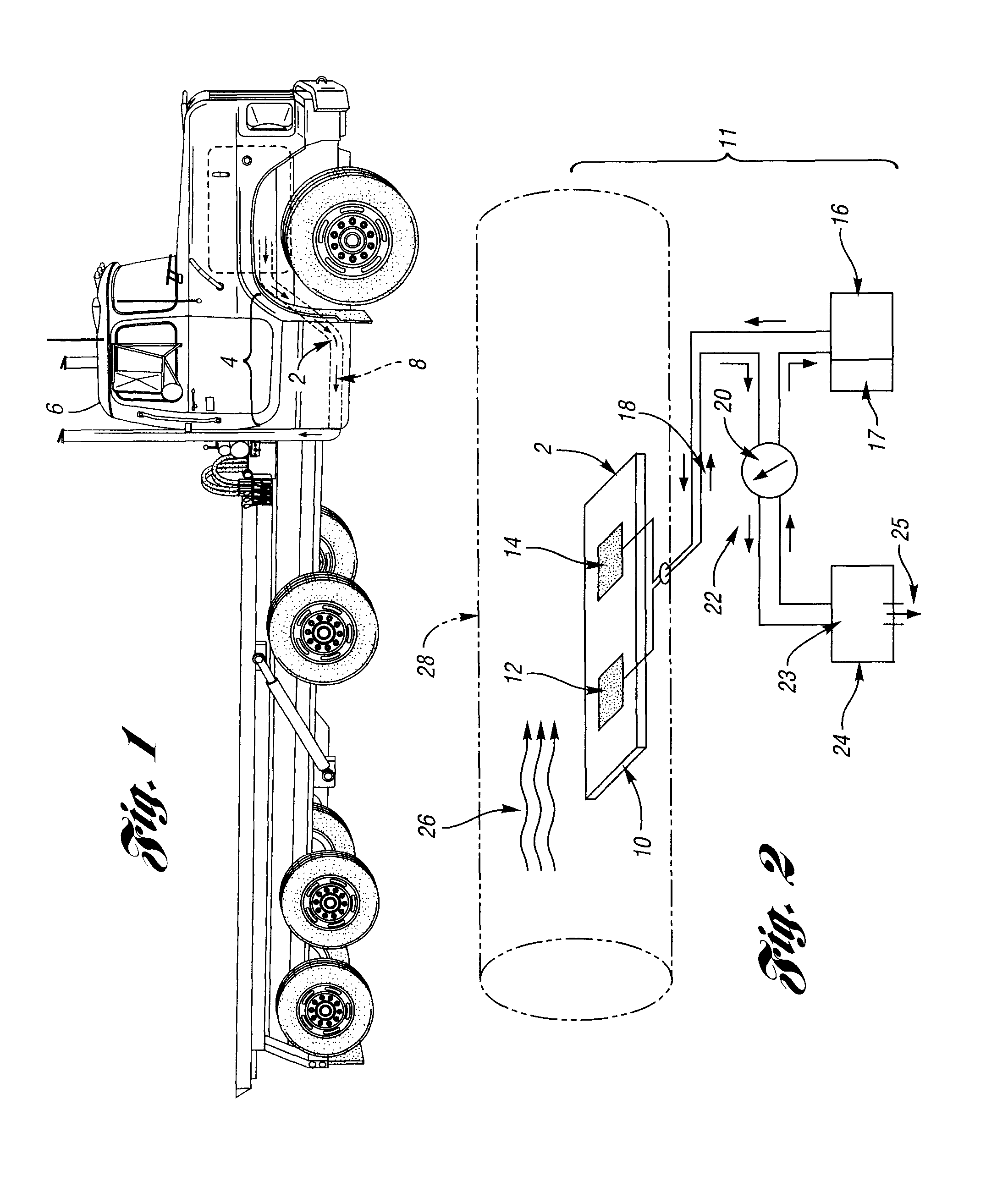Method for measuring concentrations of gas moieties in a gas mixture
a technology of gas mixture and concentration, applied in the direction of liquid/fluent solid measurement, instruments, electrochemical variables of materials, etc., can solve the problems of water vapor or oxygen interference with certain gas sensors, relative lack of sensitivity of a desired gas moiety, and relatively slow output response signals
- Summary
- Abstract
- Description
- Claims
- Application Information
AI Technical Summary
Benefits of technology
Problems solved by technology
Method used
Image
Examples
example 1
[0038]The mixed potential sensor may be constructed using the platinum member in electrical contact with the yttria-stabilized zirconia solid electrolyte. The solid electrolyte is in electrical contact with the oxide member. The co-planar semicircular arrangement of the sensor is used. Depending upon the experiment for the study, the oxide member comprises either a p-type NiO, a p-type Cr2O3, or an n-type ZnO oxide electrode. The oxide electrode and the Pt noble metal electrode are exposed to the gas mixture 26 containing nitric oxide and nitrogen dioxide. The total NOx concentration ranges from 20 to 120 parts-per-million by volume (ppmv) NOx. The experiment with the p-type Cr2O3 oxide member is conducted at 600° C. The other oxide members are tested at 700° C. The voltage measured for nitric oxide and nitrogen dioxide as a function of NOx concentration varies. The results allow the calculation of the calibration curve for these conditions, which may be used to form the transfer fu...
example 2
[0039]Referring to FIG. 5, this figure shows the output response of the observed voltage difference measured by the mixed-potential gas sensor using Pt and NiCr2O4 electrodes in the gas mixture 26. The current bias is swept from −0.1 milliamperes (mA) to 0.1 mA. The gas mixture 26 measured has 450 ppmv NOx, either as NO or NO2, and 70,000 ppmv oxygen. In this non-limiting example, a range of current biases in circle 76 is typically used by non-mixed potential sensors. Biases that may be suitable for a mixed potential sensor in this non-limiting example are either greater than +0.025 mA 80 or less than −0.025 mA 78. At the current biases where the measured output response for either of the analyte gas moieties approaches zero 82, the sensitivity may become unacceptable as the magnitude of the output response may be relatively similar to the magnitude of the electronic background noise. A sensor may be operated in a selective mode where chosen biases yield the output response near zer...
example 3
[0040]In this example, the mixed potential gas sensor is constructed. The solid electrolyte is produced as a disk by tape casting of the YSZ. The casts are laminated as disks and sintered at 1400° C. for 2 hours in air. The disks are about 16 mm in diameter and 1 mm thick. The platinum electrode is applied to the YSZ substrate by a first screen printing followed by firing at 1100° C. for 0.3 hours in air. The La0.85 Ba0.15 CrO3 mixed oxide electrode is applied to the YSZ substrate in a second screen printing. The two electrodes are screen-printed in a semi-circular arrangement. The mixed oxide electrode is fired at a relatively lower temperature of 900° C. for 1 hour in air. While not wishing to be limited by any particular theory, the relatively lower firing temperature for the mixed oxide electrode is selected as it may avoid reaction between the lanthanum-containing perovskite structure of the mixed oxide and the YSZ substrate.
PUM
| Property | Measurement | Unit |
|---|---|---|
| current bias | aaaaa | aaaaa |
| diameter | aaaaa | aaaaa |
| diameter | aaaaa | aaaaa |
Abstract
Description
Claims
Application Information
 Login to View More
Login to View More - R&D
- Intellectual Property
- Life Sciences
- Materials
- Tech Scout
- Unparalleled Data Quality
- Higher Quality Content
- 60% Fewer Hallucinations
Browse by: Latest US Patents, China's latest patents, Technical Efficacy Thesaurus, Application Domain, Technology Topic, Popular Technical Reports.
© 2025 PatSnap. All rights reserved.Legal|Privacy policy|Modern Slavery Act Transparency Statement|Sitemap|About US| Contact US: help@patsnap.com



